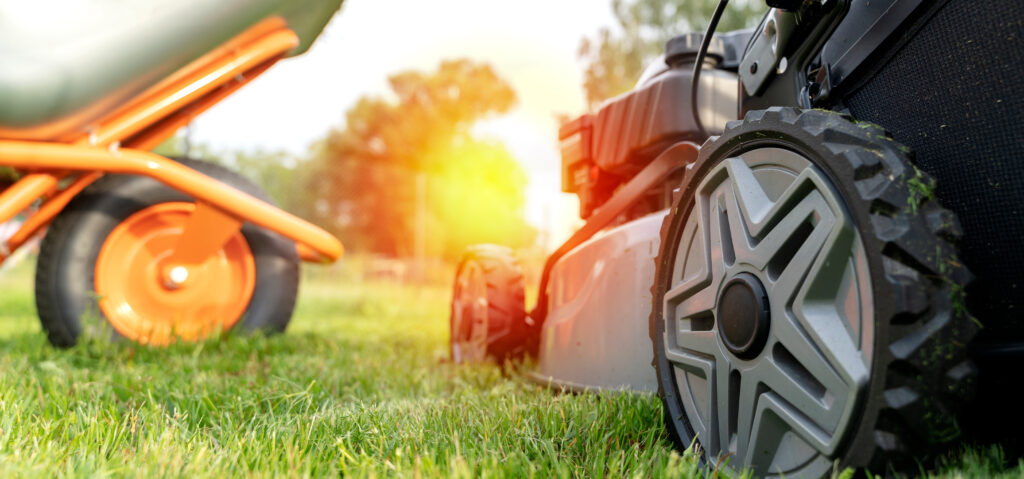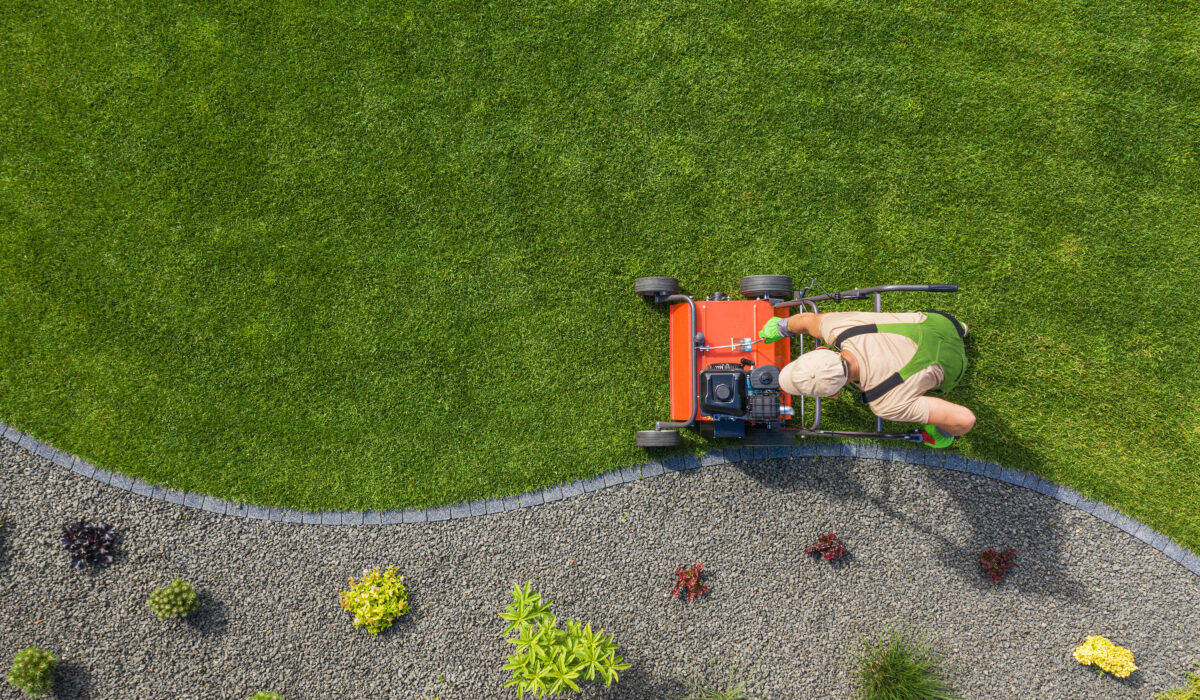Prepare for Summer – Best Landscaping Equipment to Upgrade in 2025
Don’t Let Outdated Equipment Slow You Down This Summer
Every landscaper looks forward to summer because of the job opportunities it offers and the chance to grow their business. Summer landscaping work can take a toll on your equipment, so even though it’s often the busiest time of the year, this is the time to consider your equipment needs, such as what you should replace and anything new that could make you more productive and profitable. When considering a landscaping business upgrade, you have many options to choose from.
How about a More Efficient Lawnmower?
While your landscaping business may offer numerous services, the most obvious one is cutting the grass. A well-cut lawn is something that stands out to everyone, especially your customers. Many of our customers report that this takes up a large portion of their work hours. Why not speed up the process and reduce your maintenance costs at the same time, with a more efficient riding lawnmower?
What to Look for in a Riding Lawnmower
Probably the most important thing to look for in a mower is to make sure it has enough power for the terrain and yard sizes you deal with.
There are two basic types of lawnmower engines:
- V-twin: While more expensive than other mowers, these provide more horsepower, torque, and faster speeds. Any landscaper who deals with rough terrain, hills, or tall grass would likely prefer this option. They also offer the option of using mower attachments such as cards and snowplows. They also produce less vibration, which means less wear and tear during use.
- Single cylinder: Less expensive and lighter than V-twins. They also use less fuel. These are suitable for smaller yards without significant hills to climb.
The Mower Deck
Also known as the cutting deck. It houses the cutting blades, and the larger the deck, the fewer passes you have to make when mowing a lawn. Apart from their size, there are two types of decks to choose from:
- Stamped metal: Made from a flat sheet of metal that’s pressed into shape. These offer lower costs and lighter weight.
- Fabricated metal: These are crafted out of raw metal. These are heavier and more expensive, but also sturdier and often preferred by those tackling larger lawns.
Zero Turn Lawnmowers: Pros and Cons
While these are more expensive than conventional riding mowers, they’re also popular because they can make a 180-degree turn on a dime, and their maneuverability reduces the need for edging. They don’t do as well when tackling steep hills, especially when going uphill. Most of the weight is in the back, and the rear wheels provide the power while the front wheels are a bit like casters on the front of a shopping cart.
Wet Vs Dry Disc Brakes
Most riding lawnmowers have disc brakes, but there are two kinds. Dry brakes are more common, easier to maintain, and less expensive. Wet brakes offer more stopping power, but require more maintenance and can be problematic in muddy conditions.
Optional Accessories for Riding Lawnmowers
- A locking differential can transfer the engine’s power to one wheel if the other driving wheel slips.
- Headlights are convenient when working in the early morning and low-light conditions.
- Cruise control: Just like with a car, it can take the strain off your foot and improve fuel efficiency.
- A washout port makes it easy to clean the mower deck, especially in damp conditions. Just attach a garden hose and turn on the water.
A Standing Lawnmower
The difference between a standing lawnmower and a riding mower largely comes down to preference. Those who prefer standing mowers say they’re better for your back because your legs act like shock absorbers, so your back doesn’t feel the vibrations and jostling that come from a sitting mower. Standing mowers also offer maneuverability, a compact design (so you could fit more of them onto your truck or trailer), and a faster entry and exit for the operator if you have to stop and pick up debris or jump from the mower in case of an accident.

A New Trailer
While often overlooked by some landscapers, a reliable trailer is a necessity. It’s not only important for transporting supplies and equipment, a trailer that’s in good condition also offers a professional look for your business. Here are a couple of types of trailers to consider.
Utility Trailers
Utility trailers offer an open configuration that’s suitable for many tasks, with a drop-down ramp for the easy loading and offloading of equipment. These are typically used by smaller landscaping businesses because they’re lightweight, affordable, and available in a variety of sizes.
Dump Trailers
A dump trailer can carry large, heavy loads and has a hydraulic lift for the easy unloading of soil, gravel, and other materials. These are more durable than utility trailers, but also more expensive.
Enclosed Trailers
An enclosed trailer is like a portable shed that can protect your equipment and supplies from the elements, while also offering more security than an open trailer.
Flatbed Trailers
A flatbed trailer is great for holding loads that are too large, heavy, or oddly shaped to put on a utility or dump trailer. Their durable frames and open, flat design make them popular among landscapers. Slide-in ramps let you load and unload equipment, and you can add your own side rails to help keep things in place.
Landscape Trailers
Built with landscapers in mind, there are a variety of landscape trailers available. They’re lightweight and versatile enough for a variety of uses. Some of them offer tool racks and removable sides for extra usability.
A Chipper/Shredder: Turn Waste into a Resource
Leaf mulchers and chippers can turn leaves and branches into valuable mulch and make yard waste easier to transport. You might also sell the mulch to gardeners and other landscapers or produce your woodchips, so you don’t have to buy them from someone else.
Debris Loaders: Shredding and Loading at the Same Time
Like a cross between a shop vac and a shredder, debris loaders, and a variety of sizes to suit many purposes. They can be mounted on the gate of a pickup truck, a trailer hitch, or a trailer with a hose that you use to vacuum up leaves and twigs. These are becoming increasingly popular because they make debris loading easier while also reducing its size and turning it into mulch, which is especially useful as many landfills won’t take yard waste anymore.

Wheeled and Stand-on Blowers
While backpack-style blowers are useful for clearing lawns and gathering leaves, a wheeled blower takes this idea to a whole new level. They’re lighter and more powerful than backpack blowers—and better yet, you don’t have to carry them! With smaller models, you push them like a cart. Larger models are motorized, like a lawnmower, and can turn on a dime.
Lawn and Leaf Vacuums
Cleaning lawns, sidewalks, and parking areas of grass clippings, leaves, and other debris becomes easy with a lawn and leaf vacuum. Many models also shred the debris, which reduces how often you’ll need to empty the bag.
Many Types of Loaders to Choose from
There are plenty of loaders, tractors available with wheels and tractor styles available. They can serve a variety of needs, as a variety of attachments gives them flexibility for many uses.
Wheel Loaders
These come in a variety of sizes to suit just about any landscaping job. These are great for moving materials and can handle a variety of terrain. They also come with a variety of options, such as creeper control that lets you fine-tune your speed, and a variety of attachments such as many types of buckets, forks, hydraulic lifts, grapplers, bulldozer blades, and snow blades. Their main downside is that they require a larger turning radius than tractor vehicles.
Compact Tractors
Small garden tractors can be used for clearing snow, moving materials, and many other uses. These are more expensive than wheel loaders, but they’re also more maneuverable and are typically lighter than wheel loaders.
Compact Track Loaders
Like a small bulldozer, a compact track loader is great for clearing brush, smoothing soil, and clearing snow quickly while working on soft, wet, or uneven terrain. They can also be used with attachments such as trenchers, buckets, and augers.
Skid Steer Loaders
A small but flexible piece of equipment with a tight turning radius that works well in compact spaces. As with similar equipment, various attachments add to their flexibility.
Backhoe Loaders
With a front loader bucket on one end and a backhoe bucket in the rear, backhoe loaders offer a great deal of flexibility and usage, such as digging, backfilling, and moving materials.
Excavators
Available in wheeled and tractor models, excavators have a large bucket and lifting arm that make them great for large-scale construction and landscaping efforts. They can also be fitted with rock breakers, augers, clamshell buckets, and many other things.

Apply for an Equipment Loan Today
At Blue Bridge Financial, we’ve specialized in equipment financing solutions since 2009. We offer flexible terms, predictable monthly payments, and a fast approval process. Apply today to get started, or contact us with any questions.
Frequently Asked Questions About Growing Your Construction Business
Key upgrades include riding or standing lawnmowers, trailers (utility, dump, enclosed), chipper/shredders, leaf vacuums, and compact loaders for more efficient and profitable operations.
Consider your terrain, yard sizes, and workload. V-twin engines offer more power and durability, while single-cylinder engines are lighter and fuel-efficient for smaller jobs.
Zero-turn mowers are faster and more maneuverable, making them ideal for cutting time and reducing the need for edging. However, they’re less effective on steep slopes.
A reliable trailer improves transportation, protects your equipment, and enhances your business’s professional image. Options like enclosed or landscape trailers add functionality and security.
Chipper/shredders, debris loaders, and lawn vacuums can help reduce, recycle, and even repurpose yard waste—turning debris into mulch or easier-to-haul materials.
Yes. Blue Bridge Financial offers equipment financing with flexible terms, fast approvals, and predictable payments to help you upgrade without disrupting your cash flow.
Any Questions? We'd Love to Talk:
About the Author
Nick Devernis is the Vice President of Business Development with expertise in credit analysis and equipment financing. With over 6 years in equipment financing, he offers a wealth of knowledge to readers of Blue Bridge Financial’s blog. He currently oversees the California office and leads the Sales and Marketing departments. Nick’s role as Vice President of Business Development involves management of the sales team, relationship management, and developing strategic partnerships to drive inbound and outbound originations.p> LinkedIn Profile






